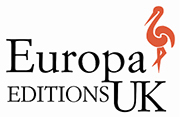The Story of the Lost Child, the new novel from pseudonymous Italian writer Elena Ferrante, brings to a close one of the most stunning fictional achievements in recent memory. Were the four novels of her Neapolitan series — which follows, over more than half a century, the difficult friendship between Lila and Elena who grew up in the same Naples neighbourhood — solely a document of that fraught relationship, they would stand as a monument of emotional acuity and razor-sharp insight. They are not, however, so limited: through the history of that relationship, Ferrante documents the sweeping, often violent, social changes that wracked Italy over the second half of the twentieth century and their effect on a single community.
Even that description fails to do the series justice. The autobiographically-rooted Neapolitan novels are in a class by themselves, impossible to define or describe with any sense of accuracy or scale.
The Story of the Lost Child follows Elena and Lila from the late 1970s through the early twenty-first century, drawing together threads introduced in the earlier novels, including their broken marriages, their shifting relationships with their lovers, families and the friends of their youth; their struggles with motherhood and with the criminal Solara family; the building of their careers and, ultimately, the disappearance of Lila (which was the catalyst for the series as a whole). It’s an expansive novel, staggering in both its scope and its intimacy.
That seeming contradiction is key to the structure — and perhaps the appeal — of the series. The Neapolitan novels exist at the fragile locus point of such contradictions: they are tremendously intimate works, written in a tone that is clinical and detached. They are unquestionably literary masterworks, but Ferrante’s prose is often wilfully ugly, sentences twisted and broken, diction by turns vertiginous and fragmented. Even their emotional intimacy itself is sprawling: the index of characters in the final volume, for example, stretches to six pages, and is far from exhaustive.
Most significantly, though: the novels are dauntingly complex (how Ferrante handles time, for example, in The Story of the Lost Child is a master class in fictional structure), but immediately accessible and absorbing. To read Ferrante is to be immersed in an entire world, subject to its violence and passions, its hopes and frustrations; readers will likely find it difficult to close The Story of the Lost Child for the last time, to consign that world to memory.


